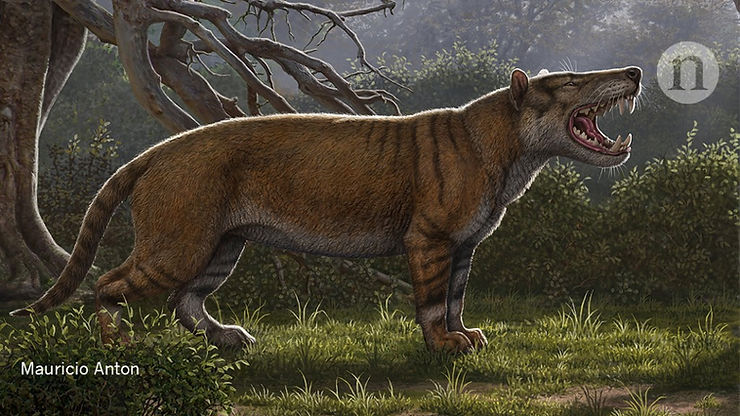By: Marina Han
The mammal roams near a river in North Dakota. It searches for any prey. It spots something out of the corner of its eye and walks toward it. Unfortunately, another animal of the same species as it catches the prey before it does. It growls at the other animal and continues roaming around.
Scientists have gathered the skeleton of an animal of this species. He is a male primitive bear that may have looked like a raccoon and probably ate like an otter. He lived some 30 million years ago and is now completely extinct, so his species may be one of the earliest carnivorous mammals. As scientists investigate this animal’s skeleton, they provide details of its short and likely painful life and hints about the evolution of early carnivores.
Paleontologists excavated the fossil of the bear in 1982. “It’s a fabulous specimen that is just exquisitely preserved,” said Xiaoming Wang, a vertebrate paleontologist at the Natural History Museum of Los Angeles County. Dr. Wang’s team published an article in The Journal of Vertebrate Paleontology and they provided details of the critter’s features from top to bottom.
Dr. Wang shared that his team also found 5 other mammals from the same species. “This animal is really telling us a lot of stories,” he added.
His team named the animal Eoartos vorax. “Eoartos” combines the Greek words dawn and bear. “Vorax” means voracious, indicating this creature’s huge appetite.
Dr. Wang’s team placed the Eoartos vorax in a group early in the evolution of carnivorous mammals. From examining the animal’s large molars, they determined that it belonged to the arctoids, which is a big group of carnivores.
The Eoartos vorax seems to be one of the earliest carnivores capable of crushing hard objects like bones. A dental exam revealed that the animal had broken teeth in the back of his mouth on his right side of his jaw. Then, he also used the left side and destroyed those teeth. Some of the other animals of the same species broke teeth in a way similar to his. “They must have been eating very hard things,” said Blaire Van Valkenburgh, a vertebrate paleontologist at the University of California.
The Eoartos vorax was around two feet long. Dr. Wang said that most of his features resemble those of raccoons. Because he had claws that were long and sharp, Eoartos would have been able to climb trees easily and possibly use that ability to escape predators. However, this creature was probably terrestrial; its flat feet would have made him able to walk long distances.
Dr. Wang’s team thinks that Eoartos vorax ate mollusks in North Dakota’s rivers, and, like otters, crushed their shells. “That in itself is kind of interesting,” said Dr. Van Valkenburgh when talking about the chomping of such hard foods.
By examining the unworn teeth of the Eoartus vorax, Dr. Wang’s team could tell the creature had died young, possibly because of a blood infection caused by his injuries. The double jaw injury would have been incredibly painful, Dr. Wang shared, and the creature would have suffered for a while.
“But for all his suffering,” said Dr. Wang. “He certainly made a huge contribution to science.”
Fossils are so important to understand what was happening before anyone living on Earth was born. They give information that can be used for many purposes to help the world now.











